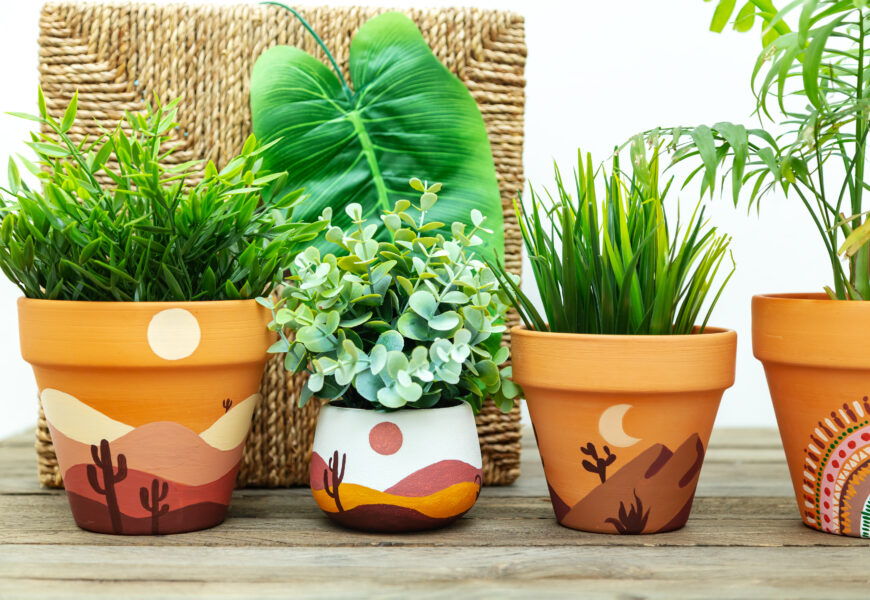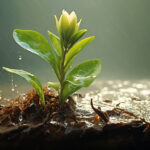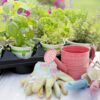Every seasoned gardener has their own tips on how to water plants. But, finding the right amount of moisture for each plant can be tricky. As summer heats up, many ask about the best watering plants guide. They want to know how to keep their plants hydrated through different growth stages and seasons.
But, watering plants isn’t simple. It depends on the plant type, the weather, and even how recently it was watered. Wilting leaves can mean too little water or stress from other factors. It’s not just about how much water, but when to water.
There’s no one-size-fits-all answer. Yet, there are clues to follow. Check the soil’s moisture by feeling its weight or digging a finger into it. This can help you know when it’s time to water.
Listening to gardening experts can improve your watering skills. For example, young trees and shrubs need deep, regular water early on. And, using ice cubes for trees in winter can help. Learn these tips and more from a comprehensive guide. It offers advice on watering throughout the year, making sure each plant gets the right amount of water.
Understanding Your Plant’s Watering Needs
Proper watering is key for healthy gardens. Plant watering tips vary by plant type. Desert plants like succulents need less water, while tropical plants like Monstera deliciosa need more.

Pot size affects how often you should water. Smaller pots dry out faster and need more water. Effective garden preparation helps plants thrive by creating the best conditions for water and roots.
When watering, think about the plant’s type and its environment. Plants in well-draining soil need more water than those in clay soils. Deep, less frequent watering helps roots grow strong and makes plants more resistant to drought and disease.
Grouping plants by their watering needs can greatly improve their health. This approach makes watering easier and prevents overwatering or underwatering. These mistakes can cause root rot or wilted leaves.
Signs of Underwatering and Overwatering
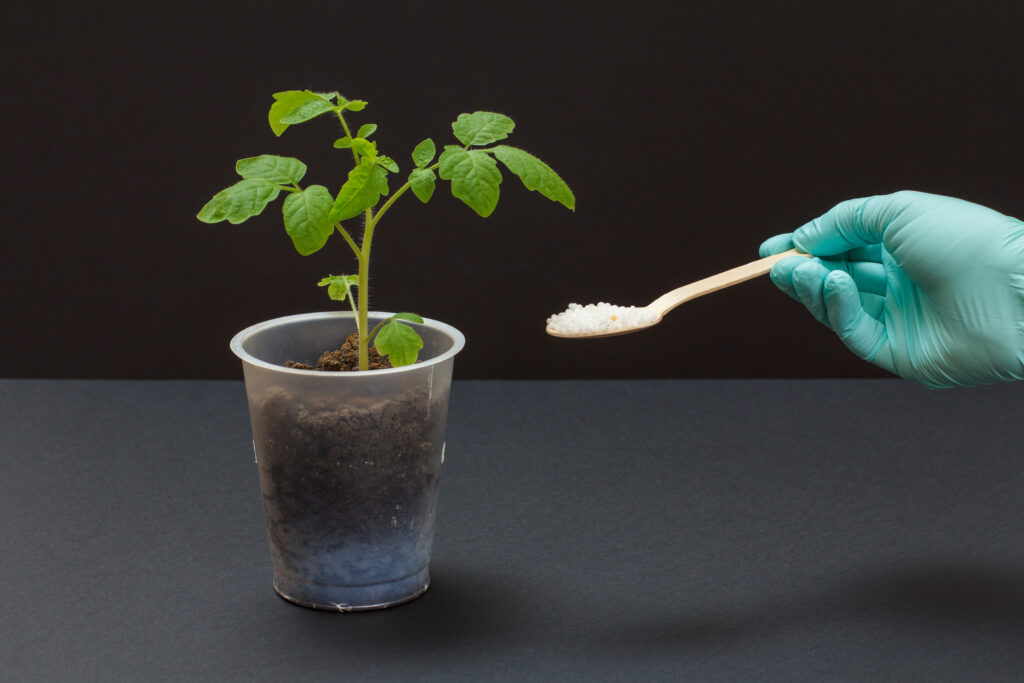
Getting your watering schedule right is key for healthy plants. But how do you know if you’re watering too much or too little? Look out for these signs. Underwatering makes plants look dry and wilted. The soil feels hard and dusty, and roots may look shriveled. If a plant perks up quickly after watering, it was thirsty.
On the other hand, overwatering can cause soft, mushy stems and dark, mushy roots. It also leads to fungus and mold on the soil surface and attracts fungus gnats. Regularly wet soil can cause root rot and other problems, making leaves droop and growth slow. If the area around a tree’s base stays wet and new growth turns yellow or withers, it’s a sign of overwatering.
Using these plant watering tips can help avoid common problems and improve your watering habits. Begin by checking the soil moisture a few inches down. Adjust as needed based on the weather and the type of plant. Remember, good watering is not just about how much water you use. It’s also about the frequency and method to ensure your plants get the right amount.
The Role of Soil and Pot Weight in Watering Plants
Knowing the right watering schedule for your plants is key. It depends on the soil type and the pot’s weight. Every plant lover knows that soil is crucial for effective watering methods. It either holds or drains water, affecting the plant’s health a lot. Soil’s composition varies a lot and is very important for setting the right watering times.
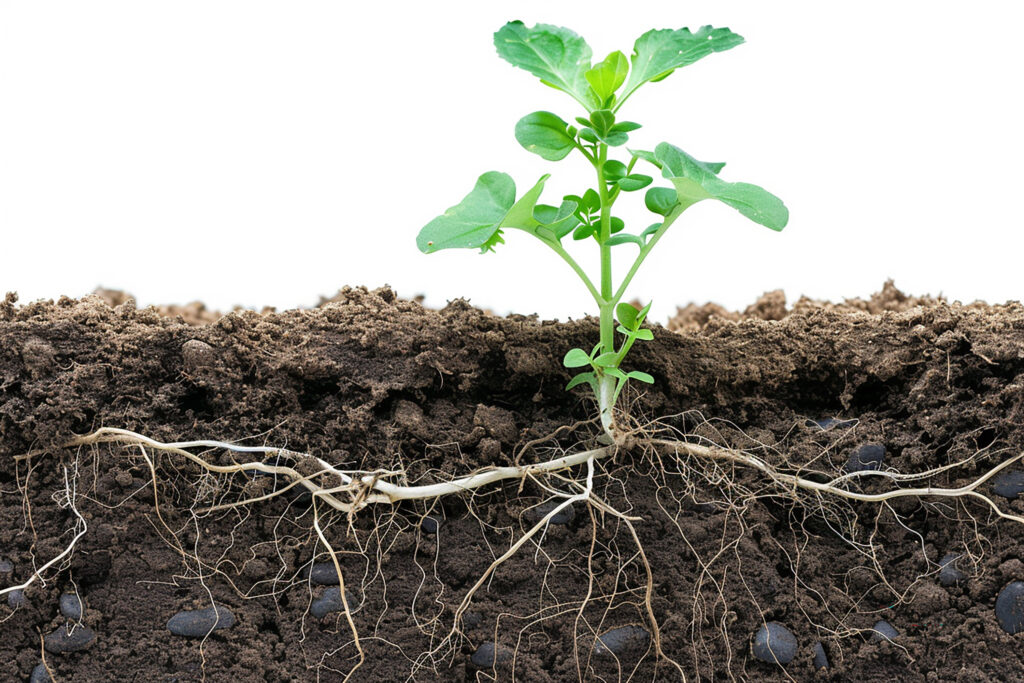
Pot materials and weights also affect moisture management. Lighter pots like plastic don’t dry out as fast as heavier clay pots. This means they can show when watering is needed by their weight changes. For example, a well-watered hanging basket will be much heavier than when it’s dry. This helps you know if the plant needs water or if it’s okay.
Tools like a simple barbecue skewer can also help check soil moisture. By sticking it into the soil, you can see if the soil is wet or dry. This is important for new plants that are still getting their roots strong.
Checking and adjusting your watering based on these signs—soil condition, pot weight, and skewer readings—makes watering more effective. Keeping the soil just right, not too dry or too wet, is crucial for healthy plant growth and life.
Best Practices for Proper Plant Watering
Learning how to water plants right is all about finding the right balance. You need to adjust your watering based on the type of plants you have. Houseplants, container plants, vegetable gardens, and ornamentals all have different needs. It’s important to water them just enough, as too much water can be bad.
Succulents do well when they get a break between waterings. On the other hand, new seeds or young plants need steady water to grow. Cool-season grasses may need less water in the summer, so adjust your watering schedule for them.
When watering plants, aim for the base to help the roots grow strong and avoid diseases. Make sure to water deeply and let the water drain well. This helps the roots get enough water without getting too wet. Remember, sandy soils dry out fast and need more water, while clay soils hold moisture longer.
For plants in containers, you might need to water them more often because they get hotter. Using water that has sat overnight can help protect your plants from harmful chemicals. Plants drink more when they’re growing and less when they’re dormant.
Mulching is a great way to help your plants get the water they need. It keeps the soil moist, stops weeds from growing, and is good for the environment.
How and when you water your plants is key to their health. Watering in the early morning is best, but evening can work too if you can’t water in the morning. Make sure the soil drains well and check how deep the roots go to avoid watering too much. Using drip irrigation can help water your plants efficiently.
Instead of following a set schedule, pay attention to your plants’ needs. This way, you’ll know exactly when and how much to water them. Your garden will thank you with beautiful growth and lots of life.

